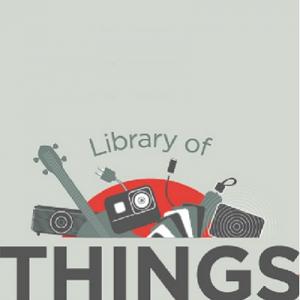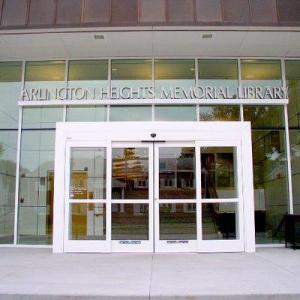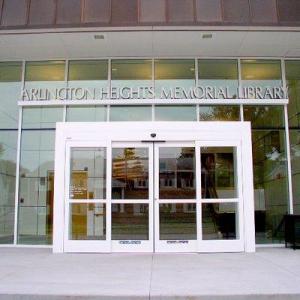11/17/2015
Replaces 04/16/2008
Replaces 04/16/2008
In accordance with the Governmental Accounting Standards Board, the library is to report capital assets and depreciate all exhaustible capital assets in the financial statements, and to maintain inventory records, which properly account for equipment.
I. FIXED ASSET CAPITALIZATION
The library's criterion for fixed asset capitalization is as follows:
The asset acquired has an estimated useful life of more than one year and the cost of the asset is equal to or greater than $10,000.
This capitalization threshold is applied to individual units of fixed assets. In general, all fixed assets, including real or personal properties, which meet the fixed asset capitalization criteria are classified as capital assets and will be subject to the following capitalization accounting and reporting requirements:
| A. |
Capital assets are reported as assets and depreciated on financial statements.
|
| B. | Capital assets are charged to capital outlay general ledger accounts 5XXX. |
| C. | The asset will be depreciated using the straight-line method (historical cost less estimated salvage, divided by estimate useful life) and full-month convention should be used. Regardless of when the asset was placed in service during the month, it will be considered in service the first day of the month. |
II. NON-CAPITALIZED ASSETS
The library’s criterion for non-capitalized assets is as follows:
| A. | Fixed assets that have an estimated useful life of one year or more and have a current value in excess of $250 but less than $10,000 are classified as non-capitalized fixed assets. Any work of art which is considered a historical part of the collection valued at more than $250 will be non-capitalized. | |
| B. | The library does not capitalize its book, audio visual and electronic collections that meet all of the following criteria: | |
| 1. | Held for public exhibition, education, or research in furtherance of public service, rather than financial gain. | |
| 2. | Protected, kept unencumbered, cared for and preserved. | |
| 3. | Subject to an organizational policy that requires the proceeds from sales of collection items to be used to acquire other items for collection, services and/or improvements for the library. | |
| C. | Expenditures for capital assets should be charged to a capital outlay general ledger accounts 5XXX. | |
III. CAPITAL ASSETS
Capital assets will be accounted for at historical cost, or if the historical cost is not practicably determinable, at estimated historical cost. Historical cost of the asset will mean the cost at the time of original purchase. The cost of capital asset includes all ancillary charges necessary to place the asset into its intended location and condition for use. Ancillary charges include costs that are directly attributable to asset acquisition, such as freight and transportation charges, site preparation costs, and professional fees (sales taxes are not to be included). Donated capital assets should be recorded at their estimated fair market value at the time of acquisition plus ancillary charges, if any.
Capital assets include the following real and personal properties:
| A. | Real Property | |||
| 1. | Land | |||
| a. |
All expenditures incurred to acquire land and to place it ready for use should be capitalized. The acquisition cost of land should include: (1) the purchase price; (2) professional fee and closing costs (title searches, architect, legal, engineering, appraisal, surveying, environmental assessments, etc.); (3) cost incurred in preparing the land in condition ready for its intended use; (4) assumption of any liens or mortgages on the property; and (5) improvements made to the land that have indefinite lives and are permanent in nature.
|
|||
| b. | When land is acquired with buildings erected thereon, a total cost is allocated between land and building in reasonable proportion at the date of acquisition. If the transfer document does not show the allocation, other sources of the information may be used, such as an expert appraisal of the real estate tax assessment records. | |||
| c. |
Land is not a depreciable asset.
|
|||
| 2. | Site Improvements | |||
| a. | Site improvements include improvement of new and old sites and adjacent ways, and acquisition of physical property of a permanent nature attached to land. Examples: Excavation, non-infrastructure utility installation, driveways, parking lots, flagpoles, retaining walls, fencing, outdoor lighting, and other non-building improvements intended to make the land ready for its intended purpose, and removal, relocation or reconstruction of property of others. | |||
| b. | Site improvements are depreciated if they are exhaustible, such as parking lots, landscaping and fencing, which are parts of a site. | |||
| c. | Site improvements are not depreciated if they are inexhaustible. Expenditures for improvements that do not require maintenance or replacement, expenditures to bring land into condition to commence erection of structures, and expenditures for improvements not identified with use or passage of time are additions to the cost of land and are generally not exhaustible and therefore not depreciable, such as excavation. | |||
| 3. | Buildings | |||
| a. |
Buildings include all permanent structures and all integral fixtures, machinery, and other appurtenances that cannot be readily moved without disrupting the basic building structure or services to the building.
|
|||
| b. | Buildings are recorded at either construction cost or acquisition cost including advertising costs, architectural and engineering fees, blueprints, inspection tests and examinations, demolition, the razing of existing obsolete or old buildings to clear sites for new buildings, building fixtures and service systems, and any other expenditures directly related to the construction or acquisition of buildings. | |||
| c. |
When buildings are constructed, the cost of each phase of the project should be evaluated separately because each phase may have a different useful life and salvage value.
|
|||
| d. | Construction in progress is not depreciated, but the cost is included as an asset in the government-wide financial statements. | |||
| 4. | Building Improvements | |||
| a. | Building improvements that extend the useful life or increase the capacity of the building are capitalized, such as roofing projects, major energy conservation projects, or remodeling and replacing major building components. | |||
| b. |
Maintenance projects that do not extend the useful life or increase the capacity of the building are expensed, such as painting and plumbing repairs.
|
|||
| c. |
To be classified as either a building fixture or a service system, as opposed to maintenance, an item must conform to all five criteria:
|
|||
| (i) | The item is attached permanently to the building. | |||
| (ii) | The item functions as part of the building. | |||
| (iii) | Removal of the item would result in appreciable damage to the building or would impair the designed use of the facility. | |||
| (iv) | The item is generally accepted as real property (not personal property). | |||
| (v) |
The item loses identity as a separate unit.
|
|||
| B. |
Personal Property
|
|||
| 1. | Furniture and Equipment | |||
| a. | Furniture and equipment are items of movable tangible assets of a relatively permanent nature having an estimated useful life greater than one year and an acquisition cost per unit of $10,000 or more. | |||
| b. |
A unit of furniture or equipment is defined for the purposes of this policy as an individual item, or group of items, which is usable for its intended function and which cannot be separated without a diminishment in the usability of the item for its intended purpose. For example, a keyboard, monitor and central processing unit purchased as components of a computer system will not be evaluated individually against the capitalization threshold. The entire computer system will be treated as a single fixed asset.
|
|||
| c. |
For furniture or equipment purchased, the valuation is the net amount paid through Accounts Payable, which is the invoice price less all discounts (except trade-in allowances). Freight and installation costs are also included if they are shown on the original invoice, or if they are readily available on related freight bills. If furniture or equipment is constructed by employees, the costs of the materials and labor as well as indirect costs should be recorded as the total costs of the item that is produced.
|
|||
| 2. |
Capital Leases
|
|||
| a. |
Leased equipment is capitalized if the lease-purchase agreement meets the capitalization criteria and any one of the following criteria as required by Governmental Accounting and Financial Reporting Standards (GASB Codification) Code Section L20.109:
|
|||
| (i) | The lease transfers ownership of the property to the lessee by the end of the lease term. | |||
| (ii) | The lease contains a bargain purchase option. | |||
| (iii) | The lease term is equal to 75 percent or more of the estimate economic life of the lease property. | |||
| (iv) |
The value at the beginning of the lease’s term of the minimum lease payments, excluding that portion of the payments representing executory costs to be prepaid by the lessee but including any profit thereon, equals or exceeds 90 percent of the excess of the fair value of the leased property to the lessee at the inception of the lease.
|
|||
| b. |
The leased equipment is recorded at the total cost net of interest expense (the present value at inception of the lease).
|
|||
| c. |
Leases that do not meet any of the above requirements should be recorded as operating leases and should not be capitalized.
|
|||
| 3. | Vehicles | |||
| a. |
Vehicles include buses, trucks, vans, pick-ups, and cars that have a useful life greater than one year and have an acquisition cost per unit of $10,000 or more.
|
|||







